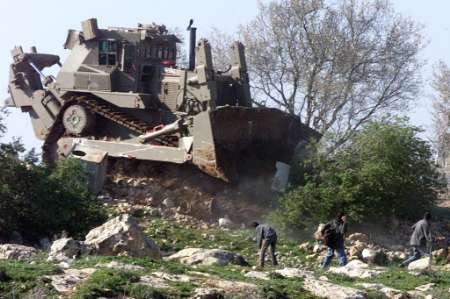Every third Israeli child is living in poverty.
This picture was provided by Israel’s National Insurance Institute. As are these:>> The Jewish state is home to some 738,000 poor children and teenagers.
>> One in five Israelis lives below the poverty line—that’s 1.63 million poor Israelis.
>> A majority of Israel’s Arabs—52 percent—live below the poverty line.
Israel has long ceased to be the egalitarian country it was at its founding 59 years ago. In fact, the gap between rich and poor is wider in Israel than in any developed country, except the United States.
And the numbers are growing.
>> According to a poll by the Israel Medical Association, more than a quarter of Israelis cannot afford comprehensive health care.
>> Since 2001, the social budget for children has been cut by some $800 million. The National Insurance
Institute has warned that further cuts could increase the number of poor children.
Most of us don’t think about Israel in these terms—we’re so concerned about the threats to Israel’s security and about its place in the world.
Yet these poverty figures are entwined with the issues of war and peace. The nearly 4,000 rockets Hezbollah fired at northern Israel last summer killed 43 Israeli civilians, wounded more than 4,400 and drove a million people into shelters. The rocket barrages destroyed or damaged at least 6,000 Israeli homes and businesses—causing $1.1 billion worth of damage. And the total cost of the war, including military spending and lost GDP has been estimated at $4.8 billion.
With reconstruction making a large demand on its treasury and putting pressure on its economy, and with a $9 billion military budget that is 8.9 percent of its GDP—the United States, by contrast, spends only 3.2 percent of its GDP on the military. It may come as a shock to learn that Israel has spent more than $14 billion on West Bank settlements.
That staggering figure covers only construction and infrastructure costs over the past four decades, according to a report by the Israeli Research Institute for Economic and Social Affairs, an independent body. The report also determined that the Israeli government contributes twice as much proportionally to the municipal budgets of settlements as it does to municipal budgets inside Israel.
These figures do not even include extra spending on settlers for education, social services, tax benefits and military protection. Additionally, many of these settlements are illegal outposts that Israel’s government said it will dismantle.
This burden on the Israeli taxpayer and the country’s poor will be the lasting legacy of Israel’s settlement movement—a folly that Shalom Achshav, Israel’s Peace Now movement, has opposed since it was founded in 1978.
Issues of war and peace are often reduced to zero-sum questions of guns or butter. In the case of Israel’s settlements, Israel today would have a stronger military, a stronger social safety net, and stronger communities in the Galilee and Negev if those billions had not been diverted to settlement-building.
In the first claim of its kind by settlers facing eviction, the residents of the unsanctioned illegal West Bank outpost Hersha have asked Israel’s High Court of Justice to order the state to compensate them if they are evicted from their homes. Despite being in violation of Israeli law, construction there has received state aid for the past 10 years, according to Haaretz. The outpost has received some $425,000 for infrastructure, for day-care and community centers, and to begin construction of some 25 housing units, the newspaper reported.
It was Shalom Achshav that stopped the madness that is Hersha, by petitioning the High Court, asking that the outpost be demolished.
And how much will Israelis pay to compensate the residents of illegal outposts? The 2005 disengagement from sanctioned settlements in Gaza (and four remote West Bank settlements) in 2005 cost Israel around $2 billion dollars. That’s more than $200,000 per settler, based upon 9,000 people being affected.
Peace Now supports settler compensation as fair treatment, just as it opposes illegal outposts like Hersha and settlements like Modi’in Illit, where a Peace Now petition to the High Court of Justice froze the illegal construction of 3,000 settler housing units.
If the Israeli government needs to be forced to dismantle more illegal outposts, Peace Now will continue to use the legal tools available. We now know that those settlements and outposts were not all constructed on state-owned land, as their proponents have long argued. Following a Freedom of Information Act lawsuit, Peace Now research based on Israel government records revealed that one third (32.4 percent) of the Jewish settlements’ land in the West Bank is private Palestinian property. And the data confirm assertions Peace Now
made earlier that the vast majority of the settlements and outposts (131 out of 162) are either partially or completely on privately owned land.

Nessun commento:
Posta un commento